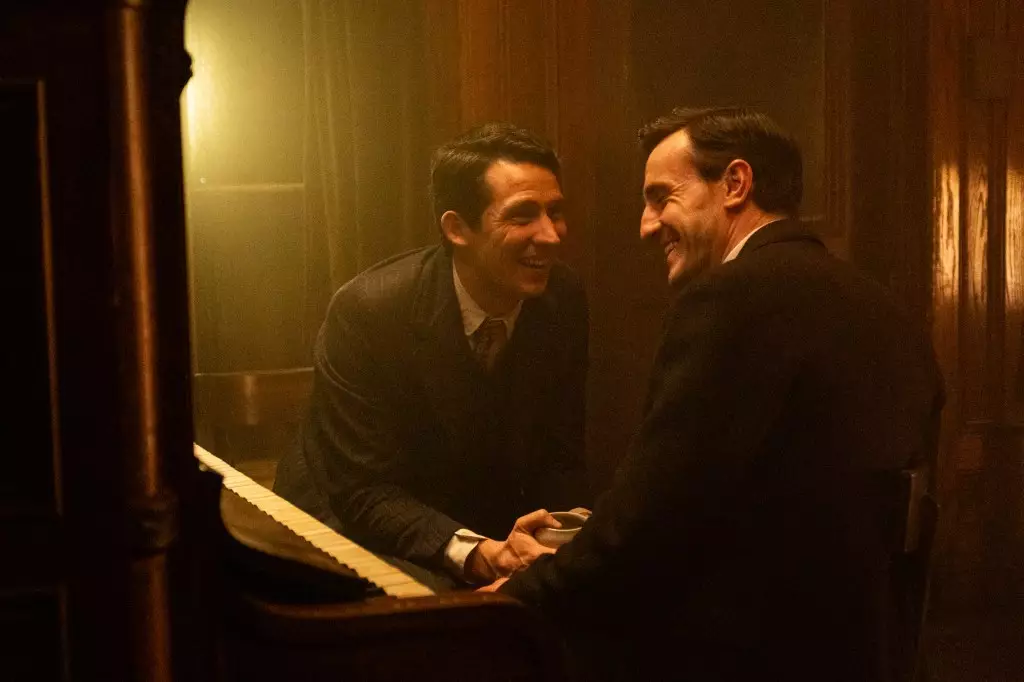In an industry traditionally dictated by big-budget blockbusters, the indie film scene continues to demonstrate resilience, even as the market becomes increasingly saturated and competitive. As awards season approaches, a natural slowdown occurs, allowing smaller projects to gain breathing room. The recent release of Oliver Hermanus’s *The History of Sound* exemplifies this shift. Premiering at Cannes, the film has made strategic inroads into theaters with a promising box office start. Its gradual but steady growth highlights an enduring appetite for stories rooted in genuine human emotion and artistic exploration, contrasting sharply with the transient nature of mainstream releases.
The Artistic Vigilance of Independent Films
*The History of Sound* centers on the nostalgic and transformative power of music, exploring a nuanced romance set against the early 20th-century backdrop. Led by powerhouse performances from Paul Mescal and Josh O’Connor, the film’s critical reception has been notably positive, with an 83% approval rating on Rotten Tomatoes. This critical acclaim underscores the vital role indie films serve — offering viewers richer, more complex narratives often overlooked by mass-market productions. Such films don’t merely entertain; they provoke introspection and foster deeper connections, proving that artful storytelling remains significant despite industry trends favoring spectacle over substance.
The Significance of Niche and Limited Releases
While mainstream cinemas often chase mass appeal, smaller films find their true strength in targeted releases and festival buzz. For example, *Predators*, a provocative exploration of the modern reality TV obsession, debuted quietly but with notable acclaim at Sundance before a limited theatrical run. Its modest box office, $7,250 at a niche venue like Film Forum, doesn’t diminish its cultural importance. Instead, it highlights the vital role of selective distribution and community screenings to cultivate a dedicated audience, fostering films that challenge conventions and push artistic boundaries.
Commercial Viability in a Crowded Market
Despite their size, indie films are capable of achieving commercial success, especially when backed by strategic campaigns and festival momentum. *The Senior*, starring Michael Chiklis, managed to secure a top-ten position with over $2.77 million across nearly 2,500 screens, illustrating that well-executed marketing and audience engagement can propel smaller films into broader recognition. Similarly, *Sight & Sound’s* *Noah!* demonstrates the enduring appeal of live theatrical events, with a robust $1.39 million opening weekend, pointing to a resilient theatrical marketplace for experiential and heritage content. These cases challenge the misconception that only blockbuster franchises dominate theaters, reaffirming the indie sector’s potential for meaningful commercial growth.
The Future of Indie Cinema: Artistic Integrity Meets Strategic Growth
Looking ahead, the trajectory for independent films seems promising, especially as they increasingly leverage digital platforms and niche marketing strategies. Films like *Peacock*, Austria’s Oscar submission, showcase emerging voices and experimental storytelling, capturing regional and global attention alike. Its success in limited release exemplifies a pathway toward wider recognition through festival circuits and targeted theatrical runs. As the industry becomes more fragmented, indie filmmakers and distributors will need to adopt innovative approaches to maintain visibility, emphasizing quality over quantity and authenticity over formula.
By maintaining their artistic integrity and embracing strategic distribution, independent films will continue to carve out a vital space within the cinematic landscape. Their resilience not only challenges industry norms but also enriches the cultural fabric with stories that demand reflection, connection, and enduring impact.
